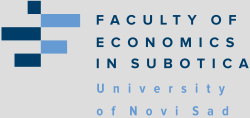Preparing For the Worst: Rising Food Prices in Serbia
DOI:
https://doi.org/10.46541/978-86-7233-406-7_223Keywords:
COVID-19, food prices, Serbia, appropriate measuresAbstract
The COVID-19 pandemic, adverse climate factors, disruptions in global supply chains, global conflicts, and disruptions in the monetary policy of leading banks are contributing to the rapid rise in global food prices. Serbia has not remained immune to global circumstances. There has been a significant increase in consumer and producer prices in the last two years. Although the Serbian government has introduced a price ceiling on basic foodstuffs, including milk, flour, pork, sugar, and sunflower oil, poor households are already affected by the inflation rate. The highest annual inflation rate in more than eight years, 6.6 percent in October 2021 and 8.2 percent in January 2022, has significantly reduced disposable income. This paper provides examples of appropriate measures that need to be taken to mitigate any such unintended consequences. From a policy perspective, there is an apparent need for (a) continued supply chain monitoring, (b) information provision, (c) agriculture and food support measures, and (d) filling commodity reserves.



